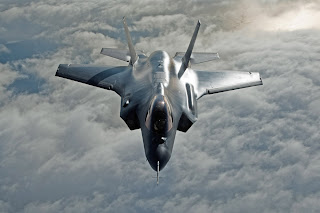Bryaxis sent me this link to a Defense News article regarding the Mistral at Bold Alligator. Here it is...
At a time when the U.S. Navy is trying to enlarge its fleet on a tight budget, a series of foreign ships offer thoughtful ideas about how that can be done.Wow.
France’s Mistral amphibious assault and command ship is a good example. Now participating in the massive Bold Alligator amphibious exercise off America’s East Coast Jan. 30-Feb. 13, she combines the commercial construction and automation to pack enormous capability into a relatively small and affordable package.
Able to carry up to 650 troops, up to 90 vehicles and between 16 heavy and 35 light helicopters, she has a crew of just 170 and costs about $600 million.
It’s hard to compare her to any U.S. vessel. She carries slightly fewer troops than an LPD-17-class amphibious ship at a third the cost and half the crew, but has a flight deck and aviation capabilities more akin to a Wasp-class assault ship at a sixth the cost and crew size.
Every vessel is the result of tradeoffs. Time will tell whether France made the right choices in a ship that compromises robustness for capacity and efficiency.
What is clear, however, is Mistral has spent most of the past four years at sea on real world missions, most recently off Libya more efficiently and at less cost than older warship designs.
Overall, Mistral is an attractive package that U.S. officials should check out more closely.
The age old argument between combat and mercantile standards.
Its really not even an argument in my mind. Remember the USS Stark? I wasn't there so I don't know but what was reported is that the ship was hit with two Exocet missiles and survived.
That's was a ship built to combat standards.
In the meantime we've had ships hit by mines...and expect our ships to go into harms way. Unless we lessen our desire to protect our men and women who crew these ships then we will continue to build them to combat standards. If we decide that saving money in the short term is more important then we need to make our people aware of that fact ---- and lower the Servicemen's Life Group Insurance payouts.
I know that high tech at sea combat is not expected but if it ever comes then the loss of life over the ten years in Iraq/Afghanistan can be equaled on one bad day.
5k or more people on an aircraft carrier.
3k or more people on an LHD or LHA.
Yeah, we need combat standards. Defense News is wrong.














